Choosing a Portable Power Station for Astrophotography

One of the most common questions I get is “what portable power source do you use for astrophotography”. This is a hot topic in the astrophotography community, and there are many options to consider for powering your gear at night.
When deciding on an off-grid power station, you need to think about things like battery life, power output, power input charging, and the number and types of output ports. There is no one-size-fits-all option, as budget and weight come into play as you explore the higher-end options.
If you’ve ever browsed the Portable Power Stations on Amazon, you’ll know that there are literally hundreds of options to choose from. However, choosing the right one for your telescope and astrophotography purposes requires a slightly different approach.
Which portable power station is best for astrophotography in the field?
Whether charging via solar panels when you are off-grid is important to you, or you need a unit that can save your butt during a power outage – there is an option for you. If you enjoying comparing features and prices, selecting the best portable power station for your astrophotography needs is actually kind of fun.
In this article, I’ll describe my experiences using a premium portable power station, and provide a number of alternatives suggested by astrophotographers around the world.
Feel free to leave a comment describing the portable power station you use, to help create a complete resource for astrophotographers. Just like everything else in this hobby, there are many options to choose from at various price points.
The Need for a Portable Power Station
When taking pictures of space from the backyard, I plug into household AC power, but what about when I travel to a dark sky location? Milky Way photography with a DSLR and star tracker is one thing, but running a robust deep-sky imaging kit away from home is another.
There is a good chance, that if you’re an amateur astrophotographer, at some point you will need to invest in a quality portable power station. Something that can reliably power your astronomy telescope and accessories throughout the night.
Portable power stations are essential while camping.
Visual observers sometimes need power for a goto computerized mount and maybe a few dew heaters, but astrophotographers? We need to power anywhere from 3 to 17 devices (or more) and if even one of them fails, you can kiss your precious picture goodbye.
Thankfully, today’s portable power stations are equipped with many output ports, including dedicated AC and DC ports and multiple USB types. Some of them even include integrated wireless charging areas to charge your phone.
Here are some of the potential devices you will need to power on your astrophotography setup:
Powered Devices for Astrophotography
- Dedicated Astronomy Camera
- Equatorial Telescope Mount
- Camera Controller/Laptop
- Dew Heater Bands
- Autofocuser/Electronic Filter Wheel
In the following video, I provide an overview and real-world experiences using the brand new Anker 757 Portable Power Station. Anker asked that I provide an “astrophotographer’s perspective” of their new mobile power station.
This is a great option to consider if you need a serious power station that can handle a wide variety of devices. If you are running a simple setup in the field, this type of portable power may be overkill for your astrophotography needs.
This large 1500W power station can power a robust setup for multiple nights.
Portable Power Station vs. a DIY Solution
The Anker 757 Portable Power Station is a fantastic unit, capable of powering several devices for an extended period of time. However, many amateur astrophotographers believe that it is more cost-effective to just “build your own” DIY power supply using a deep cycle marine battery.
There are some serious cost savings if you take this route, and there are many great how-to tutorials available online to build one. To build one you will need:
- A sealed deep cycle marine batteries
- DC to AC power inverter
- Smart Charger/Maintainer
- Inverter Cable
Unfortunately for me, I have not had much luck with a DIY deep cycle marine battery unit (yes, I built one several years ago). My poor experience taking this route is likely due to the fact that I have zero experience in the field of electrical or mechanical engineering. It seems that I am the exception in the astrophotography crowd.
As I mentioned in the video, bulletproof reliability is critical to me, and I am willing to pay a little extra for it. The all-in-one package that Anker has created is impressive and is a smart option for anyone willing to pay the added cost.
Here is an example of someone who built their own portable power station using a mix of components. If you’re up to the task of taking on projects like this, you can really save some money. Again, this is beyond my personal skill set, but it’s an option.
Video: How to Make a Portable Power Station
A Portable Power Station for your Telescope
To me, the most important feature of a portable power station for astrophotography is reliability. It also has to have enough power to go at least an entire night (or 2) before needing to be charged.
It also needs to have enough output ports for all of the astrophotography accessories I need to plug in from USB-powered dew-heaters to my laptop charger.
If the portable power station is not up to the task of providing a constant source of power to my rig for an entire night without interruption, it’s useless to me. Even a brief outage means I lose the connection to my telescope mount, the autoguiding goes nuts, and I squander a precious clear sky.
I’d rather run a 200-foot extension cord than risk a battery that flickers in and out. I’ve had this happen before, and it’s absolutely infuriating. The good news is, that most of the astrophotography gear we all use does not consume a lot of power, with a few exceptions of course.
Anker 757 PowerHouse
I tested Anker’s flagship 1500 Watt power station to run my deep-sky astrophotography rig, the 757 PowerHouse. It’s pretty heavy (44 pounds), but the built-in handles make it a lot more manageable.
The 757 uses premium LFP (LiFePO4) batteries, and it can charge from 0% to 80% in about an hour. It’s a slick package made with an automotive-grade aluminum frame. It’s vibration and temperature resistant, and here’s an important one, it’s silent.
The Anker 757 PowerHouse is a 1500W (1228Wh) power station with LPF (LiFeP04) batteries and 13 ports to connect various devices.
There are 13 ports in total to power everything you need for your astrophotography imaging rig. There is 1 “car-socket style” DC port which you might use for your computerized telescope mount.
I still use a DC connection for my Sky-Watcher EQ-6 Pro equatorial mount, so I was pleased to see it there. The rest of my astrophotography equipment is powered by the AC and USB outputs on the power station.
I like to plug in things like a 12V 4A power supply for my ASIAIR Plus, or Celestron NexStar 8SE into the AC output ports. The USB-A ports are perfect for my USB-powered dew heater bands, although you’ll need to make sure that you have long cords to reach the power station from the objective of the telescope.
Those of you with laptops, cooled dedicated astronomy cameras, and autofocusers will have more than enough power to play with for about 2 straight nights (depending on usage and temperature).
When running an advanced astrophotography setup including my Sky-Watcher EQ8-R Pro mount, cooled camera, and dew heaters, the 757 PowerHouse had 45% power left after 1 full night.
One thing I should note – if you’re using the power station to power your rig, do not use “power-saving mode”. This is designed to turn off when your device is fully charged, which is not applicable when powering your equatorial mount for an entire night.
Anker 757 Power Station Specs
- Rated Capacity: 51.2V 24000mAh / 1228.8Wh
- AC Input Voltage: 100-120V~ 12A Max, 50Hz / 60Hz
- AC Input Power (Charging): 1000W Max
- AC Input Power (Bypass Mode): 1440W Max
- XT60 Input: 11-30V⎓ 10A (300W Max)
- USB-C Output 1: 5V⎓3A/ 9V⎓3A/ 15V⎓3A/ 20V⎓3A 20V⎓5A (100W Max)
- USB-C Output 2: 5V⎓3A/ 9V⎓3A/ 15V⎓3A/ 20V⎓3A (60W Max)
- AC Output (Bypass Mode): 100-120V~ 12A Max, 50Hz/60Hz, 1440W Max
- AC Output (Inverter Mode): 110V~ 13.64A, 50Hz/60Hz, 1500W Max
- USB-A Output: 5V⎓2.4A ( 2.4A Max Per Port )
- Car Charger Output: 12V⎓10A
- Discharging Temperature: -4°F-104°F / -20°C-40°C
- Charging Temperature: 32°F-104°F / 0°C-40°C
The light bar is handy to have when you’re off-grid, and I am happy to see that it is a warm color temperature and that it is soft. A lot of the lights on portable battery packs use hyper-white, blinding LEDs. This one is a warm, orange color.
However, I wish that there was a red light option to protect your night vision even better. I also wish that clicking the display button for a second time (when it’s on) turned it off, but it doesn’t. So, you may want to cover this up with tape if you are at a star party or a gathering where any amount of light needs to be shielded.
The manual states that the operating temperatures should be between 32 and 100 Fahrenheit – or 0 – 40 Celsius. That definitely puts a limit on the times of year you can use this power station, and it’s something to consider.
I use a portable power station to run my Celestron NexStar 8SE while camping.
Smaller Options for Astrophotography
Jackery Explorer 500
If you’re on a budget and prefer to keep your power station light and portable, the Jackery Explorer 500 Portable Power Station is a great option to consider. This power station weighs just 13 pounds and is one of the lightest and most portable rechargeable lithium battery generators on the market.
Jackery Explorer 500
The Jackery Explorer 500 has a 518 watt-hour (24Ah, 21.6V) lithium-ion battery pack and a pure sine wave inverter. It includes 1 AC outlet, 3 USB-A ports, 2 DC ports, and 1 car socket. Jackery also offers a smaller version with less wattage (Explorer 240) for maximum portability.
Please note: A number of amateur astrophotographers have had issues powering their Sky-Watcher EQ6-R Pro with the Jackery brand power stations. Please see Ken Scheben’s description of the problem in the comments section of the article.
Bluetti EB3A Solar Generator
The Bluetti EB3A is another portable power station to consider. This one only weighs 10 pounds, yet it has a 268.8Wh capacity and features an impressive 9 output ports. This unit was named the “Best value portable power station” on CNET’s list of Best Portable Power Stations.
This power station can be charged using the optional Bluetti solar panel, and even has a dedicated mobile app to monitor battery levels and output information. The Bluetti EB3A is an impressive unit that I hope to experience firsthand in the future.
Bluetti EB3A
If you need a lot of power, have a look at the Bluetti AC200P. This monster weighs 60 pounds and offers a whopping 2000 watts of power!
Togo Power Advance 350
The Togo Power Advance 350 was specifically designed for charging laptops, mini-cooler, drone, and other outdoor electronics. With 330W, it has more than enough power to handle running your astronomy gear for an entire night.
The AC pure Sine Wave outputs will provide clean power to your devices. It features 8 output ports in total, including 2 handy 12V 10A DC ports for powering your astrophotography devices like the ZWO ASIAIR, and/or dedicated astronomy camera.
This unit can be charged using a solar panel in about 5-8 hours on the road, and also features a 10w wireless charging area for your smartphone.
Togo Power Advance 350
Final Thoughts
There have never been so many great portable power stations available to choose from. The price, wattage, and the number of ports on these units vary widely. The Anker 757 PowerHouse is an excellent choice, in my opinion, if you’re willing to pay extra for a heavy-duty power station.
The car battery booster-style packs I purchased from the hardware store in the past, were a huge letdown. All of them would hold less and less of a charge over time, and would unexpectedly shut off in the middle of an imaging session. Thankfully, portable power stations have come a long way since then, and are much more reliable.
I know that a lot of you have built your own DIY power supply consisting of a marine battery, and an inverter. If you enjoy that type of thing (and know what you’re doing), by all means, go for it. You’ll likely save some money and get to work on a fun project.
If you are more comfortable in the office than in the shop (like me), one of the many fantastic pre-built portable power stations is likely a better fit, and worth the added cost.
Be sure to choose a unit that has dedicated output ports for the astrophotography equipment you use most, and that it can reliably power your rig for at least 1 entire night before requiring a recharge.
For now, I’ll continue using the Anker 757 PowerHouse on my astrophotography and camping adventures, and plan on getting a lot of use out of it for several years. I hope that this article was useful to you and that you have a better understanding of the options available in 2022.
Even More Options to Consider
Here is a list of options provided by the AstroBackyard community on YouTube and Facebook:

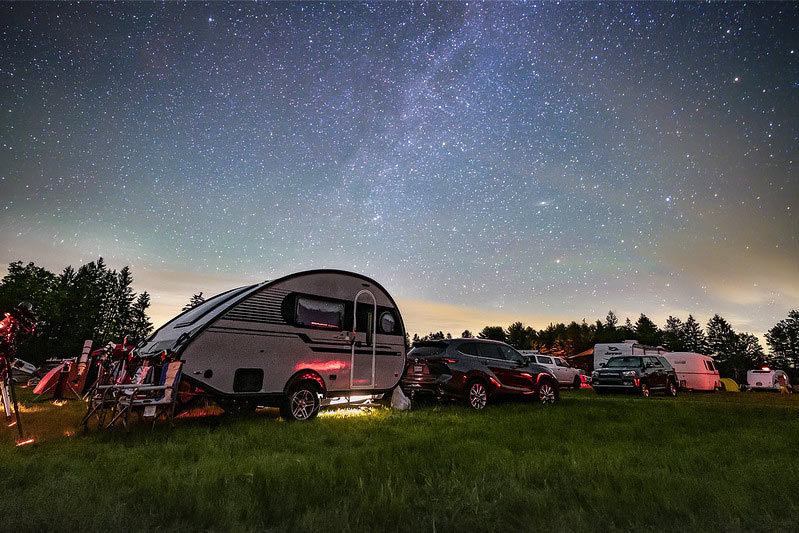
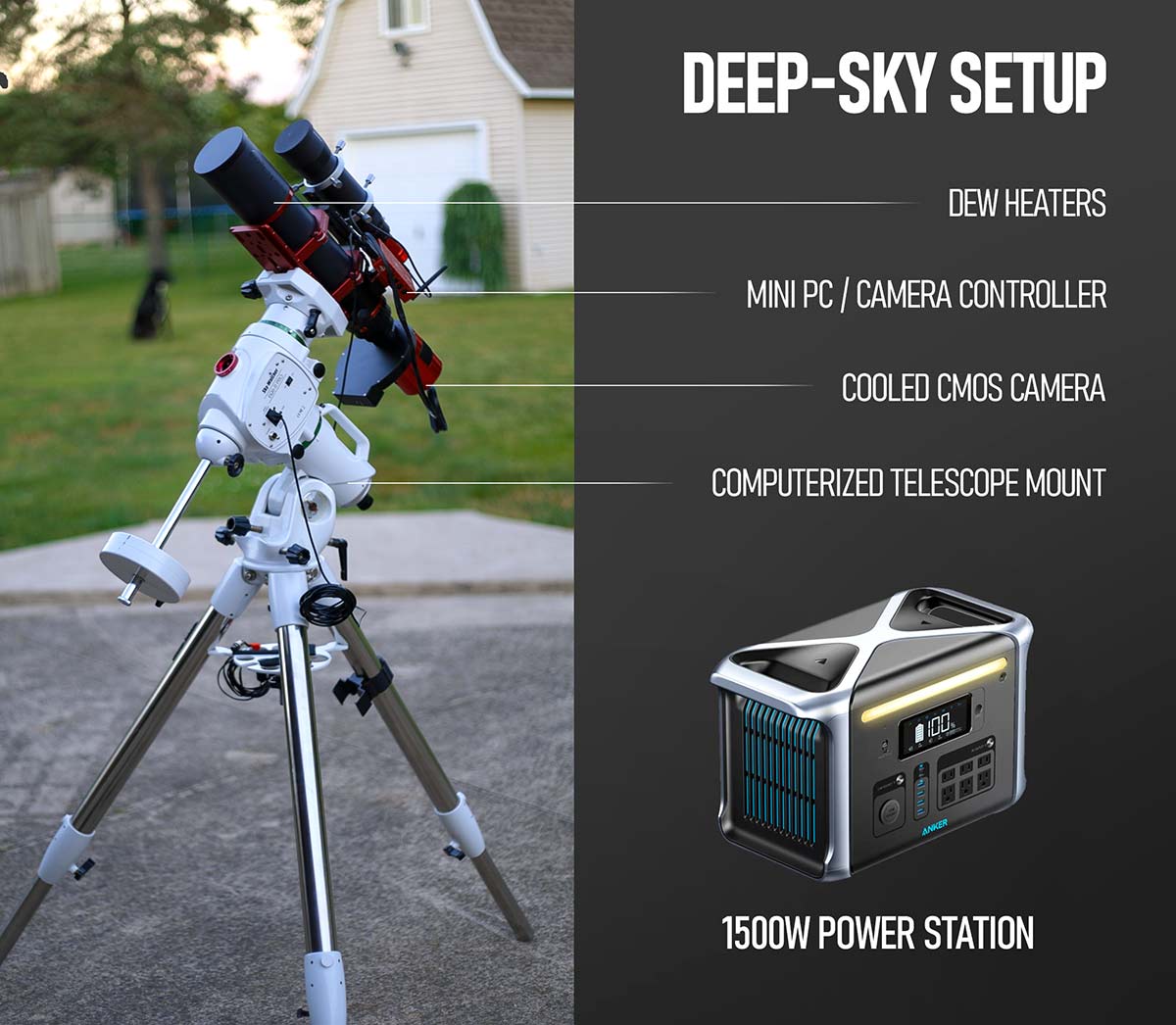


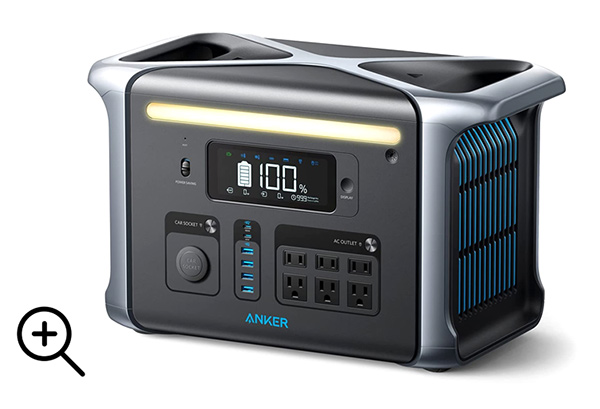
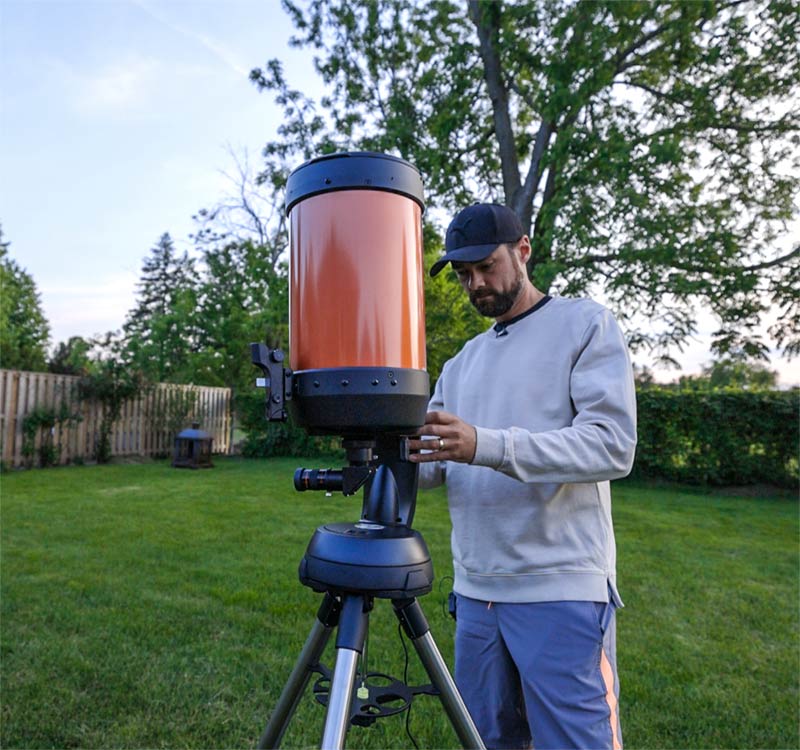




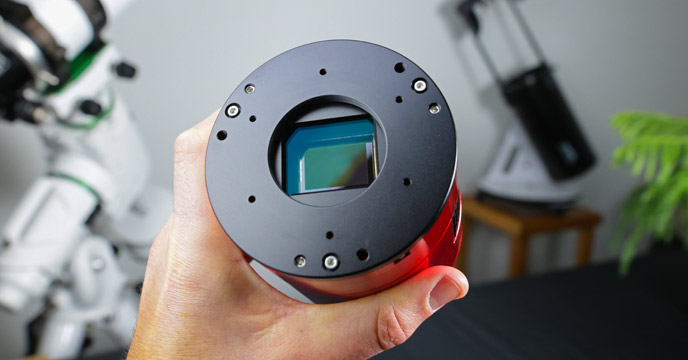
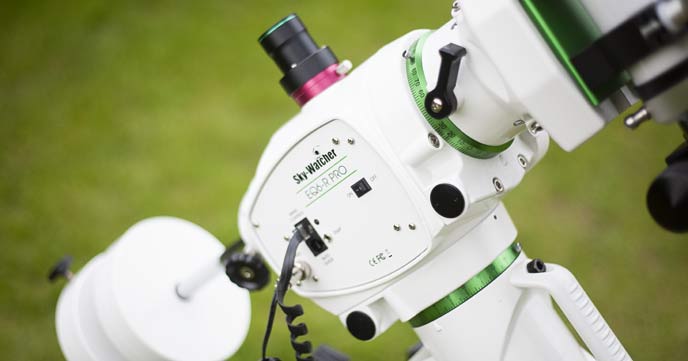
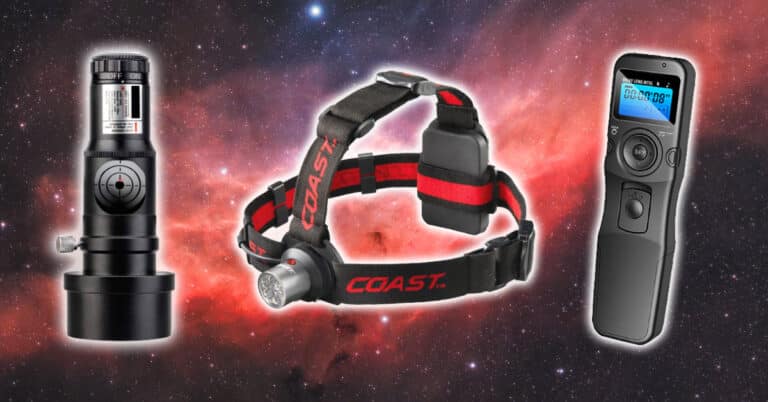
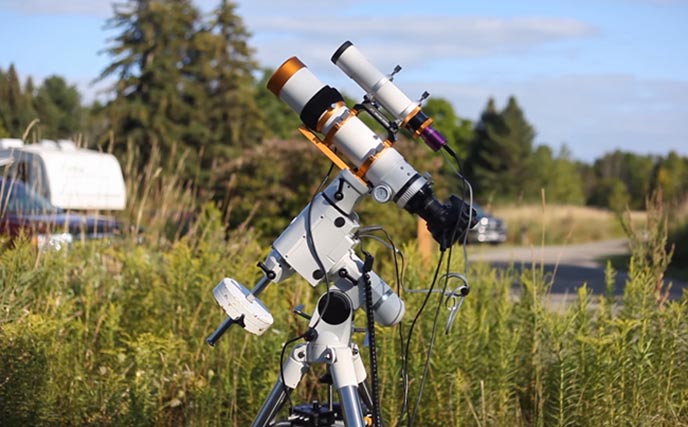


I go out to Big Bend National Park a few times a year. I camp in an area with no electric. I use a Goal Zero Yeti 500 and 200 to power smaller devices such as an iPad and recharge batteries for my Canon R6.
I use a 100Ah lithium battery to power my astrophotography rig(s). The battery sits in a marine box with a one 12v port. No laptop, I use an iPad Pro and ASIAIR.
I charge everything via solar.
The main reason I use a regular lithium battery is it serves as a backup to my vehicle battery when I’m miles away from anything and there’s no cell service. I’m sure I could rig up a power station in a pinch, but the lithium is plug and play.
I also like the simplicity, no special adapter to charge via solar. I rigged up a power meter that allows me to monitor usage, calculate runtimes and monitor solar charge rates.
Hi Trevor,
I am using the Ecoflow River pro station. I really like it!
Hello Trevor,
Operating temperature of the Anker 757 is between -20 and 40 C, so lowest of 0 Celsius is only for charging. The discharge temperatures are the operating temperature range i.m.h.o.
So you can use it in winter, maybe in Canada not all the time.
Greetings from NL,
Erik Schut
Great article Trevor and very timely for me. I’ve been struggling with the power to my EQ6-R Pro mount and have had to return it to Skywatcher for repair twice in the past 5 months. Both repairs involved replacing the controller board. My last mount failure was particularly ill timed as it happened at the Cherry Springs Star Party in June, leading to a 13 hour round trip drive without capturing a single sub! I’ve been using a Jackery portable battery when I’m away from home and after the last repair, I spent some time conversing with the engineers at Skywatcher. I was somewhat surprised when they shared with me that they’ve had a large number of problems with mounts powered by Jackery batteries. One of their engineers further shared that his personal testing indicated that he recommended Eco-Flow, Goal Zero and Celestron Lithium Pro. Of course, I’m sure they haven’t tested them all so your Ankar unit could very well be an excellent fit. Their techs implied that the Jackery 12V output is actually not maintained at 12V under load. This leads to the mount pulling more current to make up for that and this in turn heats up the ICs until they eventually melt. I have no idea if this is in fact correct as I have not done the testing myself. However, in an effort to never again have a mount failure at a dark sky site, I recently invested in an Eco-Flow unit which was one of the Skywatcher recommended brands. So far it’s worked out perfectly although I haven’t had many opportunities to test it yet. I’m sharing this in the hope that it may help someone else avoid the problems I’ve been having!
Thank for your comment Ken. I was about to purchase Jackery portable power source for my Sky-Watcher EQ6. Your comment perhaps saved me from a lot of trouble. Thank you.
Best Regards,
Peter
Ken – I am so glad you shared your story to save others a lot of frustration! Great seeing you again at Cherry Springs – Clear skies!
I have two, Jackery, portable, power sources: a 200 W and 300 W. For my purposes, these are economical and very reliable solutions for my portable power source requirements.
The 200 W source can run the sidereal drive on my MEADE LX70 mount (using a 6 W A to D converter), with a 6-inch or 8-inch Newtonian attached, for 8 hours and still retain 85% of its stored power. This power source eliminated my need for D cell batteries to run the LX70 mount and so paid for itself in 8 months. If I add a cooled ZWO camera and a laptop, 30-35% of the power remains after 8 h.
The 300 W source will run my ORION ATLAS II mount (with an 8-inch Newtonian attached), two ZWO cameras (main (cooled) and guide cameras) and a laptop for 8 h and still retain 35-40% of its stored power.
Yes, I will have to recharge each power source before using it again, but this has never been a problem.
Nice summary of these power units, Trevor! I bought the “GOLABS R150 Portable Power Station, 204Wh LiFePO4 Battery with 160W AC, PD 60W, 12V DC, Type C QC3.0 Outlets, Solar Generator Backup Power Supply for Outdoors Camping Fishing Emergency Home Orange” from Amazon about 6 months ago (currently $110.00 US). Doesn’t have as much power as some of the others, but the advantages are the port versatility, weight (not very heavy compared to others), and the very reasonable price. Of course, it’s not suitable to tons of equipment or multiple nights, but for my one-night stands, it’s worked beautifully.
There is also GoalZero portable battery power units. Many years ago I built a power unit out of a emergency power pack for vehicles and on the handle I attached a small piece of wood that help a power inverter, I used it for running my barn door tracker and charging cellphone. Rama radio or small b&w tv during a winter storm when the power went out. Took it to StarFest every year and it charged many cellphones and other things for people.
Aggree with you Trevor
The only way to go is to use a good power supply. Marine or car battery drops in current really quick and causes problems, they are also normaly heavier then other solutions….but of course less expensive.
I use a Li – ion battery 1500 wh with continues and stable power output 13 volts DC and max 10 amps
My rig needs 3-5 amp average output
Never had any problems.
And i only need to reload max once a week if i use it every night
Also 220 v ac outlet and also solar power is possible to use for reload
I use a Bluetti EB70S and when it gets down to below -10 C I put it in an insulated box along with the laptop. Kept everything warm and working down to -35F this winter in Wisconsin.
To make you charge last as long as possible try to run everything on DC. The inverters take power in and of themselves and are rarely at best 90% efficient at conversion. Then the bricks to change back to DC are little toasters too. Even the laptop I use can charge and run through a USB C port so when in the field I use no power bricks at all.
I use the Powerwerx PWRbox with a 20ah battery. And the Powerpole connectors are a direct fit for the power cable.
It works well for me. You can get them up to 70ah (MEGAbox) depending on your needs.
I bought the sale on the Jackery Costco package of the 240W and 850W including two 65W solar panels with all the cabling as a self contained unit. The 240W is what I use to power my CGX-L mount with the supplied 12V car adapter. I power my Pegasus Ultra Box with the 110V outlet. I live in a dark sky area of Arizona (Bortle 4) and started the evening’s activities at 100% charge on the 240 (small light weight) and at dawn the next day it was down to 20% charge. Three image gathering sessions throughout the night using the ASI 294 OSC. Because it was warm at night the fan was mostly constant at 80% to -5C degrees. Watching the power spikes on the Pegasus app revealed nothing greater than 25W pull when slewing.
Pretty awesome power supply. Recharged the next day back to 100% and ready for the next night. The 240W Jackery has an internal fan as well for its operating temperature range. I’m pretty pleased with it.
I’ll take both the 850 and 240 with me on trips away from home. In addition, as an experiment/test, I used the 850 to power a side-by-side Frigidaire refrigerator/freezer to check its performance. Lasted all day into the evening…maybe 16 hours.
I’m pleased to be going all solar for astronomy…except for my computer. Haven’t tested that yet. Need to get a small dedicated CPU I guess.
Hi Trevor. Great review. It is unfortunate, us Canadians, can’t purchase the Anker 757 in Canada as of yet, therefore I’m thinking of getting the BLUETTI Portable Power Station AC200MAX.
Hi Trevor, I have to drive 20 minutes to get to my dark site. I use a 110Ah maintenance free lead/acid leisure battery which I bought in 2013 for about $90. I use it to power my HEQ5 mount, Astroberry Raspberry Pi and ASI294MC Pro OSC camera. The RPi also has a GPS and guide camera attached. Dew shields on my 200mm Newtonian and 80mm guidescope always seem to work well so I don’t use dew heaters. One power cable from the battery plugs into a 12V power splitter box strapped to my tripod. That box also has a 12v to 5v DC-DC converter for the RPi. There are other cables, one of which powers a laptop PC via a 12v/19v DC-DC converter when I need that for my Polemaster. Another I use for my flats panel and there’s a charging cable into which I plug an intelligent charger when I get home. I don’t need AC or USB etc. so my system is very simple. The battery has a window with a coloured condition indicator. Green for “Good condition”, Black for “Charging necessary” and White for “Replace battery”. In nine years of use down to -10degC once or twice I have never seen it show anything other than Green. The only downside is that it is very heavy. I can use the laptop but most of the time I operate my system from an iPad. BTW I use Anderson Powerpole connectors on the cables which I find work very well.
‘Love your videos, all the best from the UK,
Pete.
I looked into portable power supplies, but the cost for anything of 500W and above can be astronomical, especially taking into consideration solar panels for recharge.
In the end, I opted for “farm stays”. The wife is comfortable, I still get dark skies, I can power via domestic AC supply, and it isn’t as though I head for dark skies every weekend.
Great post. I agree Jackery 500 or equivalent is a great option for most setups. I decided to do a DIY approach not only to save money but to make something a little more convenient. I took a standard wheeled toolbox by Husky, mounted 2 lipo batteries 40 amp hour) and a ac/dc power source; secured them under a false bottom then mounted counter weights and all other accessories on shelves above. So basically one easy to move box for everything except mount and scope. When I am in backyard I plug extension cord into external plug on outside and flip external switch to go from battery power to ac. So same exact cables to scope whether it’s battery powered or 120/220v. It’s been a really simple way to do things.
Ken Scheben’s comment has me a little worried in case the voltage of my 110Ah lead acid battery drops below 12V and results in failure of the motherboard in my Skywatcher HEQ5. My battery is 9 years old so the voltage probably drops quicker now compared to when it was new. I think I will take a multimeter with me in future to monitor the voltage drop during my imaging sessions.
Pete.
Hi Trevor,
Not sure if it’s just my own experience, but having used the SW AZ EQ6 Pro along with both the Power Oak 500W, if I attempt to plug in another device, the mount auto guiding goes bananas! If I’m just running the mount it is perfect. I therefore run all my other bits off my Jackery 250W.
Just a note on the Jackery, I attempted to run the mount off this power tank and once again the EQ6 started doing odd 360 rotations!
I’m assuming the EQ6 models are power hungry beasts?
Thanks to Ken for the tip on Eco Flow. Just got myself the River 288 instead of Jackery and think it’ll be better overall anyway. Willing to put up with a premium price point for expandability as I go.
Or, my needs will vastly change by the time I max out the battery and I’ll just have to eat the cost. lol
I use an EcoFlow River Pro. I paid a bit more for all the output ports as charging family gadgets on outings is another use. It puts out at about 13.6V and I tend to run gear off 12V AC adapters until I’ve confirmed they are ok at that voltage when it switch them to the DC going through my Pegasus PBUV2. It powers all my astro gear for at least 2 nights. Obviously an adapted marine battery is less expensive but for convenience and stability I love it. Mark 2 model is out now with many more charge cycles, though for typical astro use that won’t matter. PLL recommend this range for their Eagles and make the point that the slightly higher base voltage prevents gear fails that you might get with voltage dropping below 12 late in a long session.
Just a quick note to mention that I had to return an EcoFlow River Pro 2…it was dropping as low as 11.6v! The older models had a higher voltage rating. I mentioned this to PLL, and they’re looking into it as well.